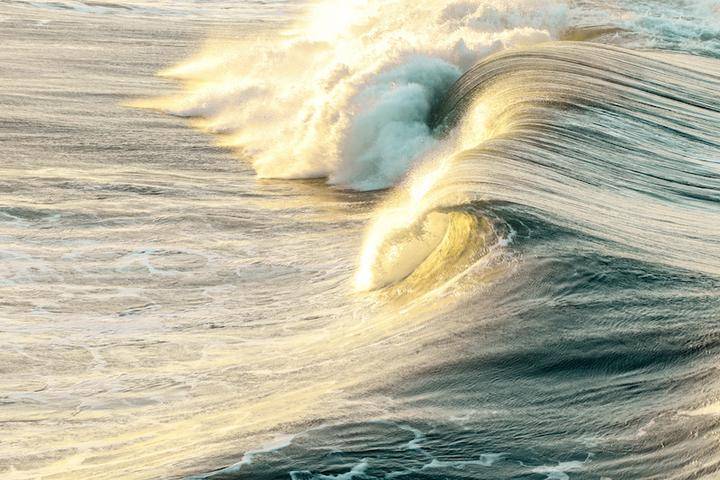The more you learn about the science of ocean waves, the greater your capacity to find them, catch them and ride them will be. Toward that end, what follows is a brief outline of wave formation to help you integrate your knowledge of surfing with your knowledge of waves.
THREE TYPES OF WAVES
There are at least three types of waves that form in the ocean—tsunamis, wind swells and ground swells. Tsunamis (despite claims to the contrary) cannot be surfed, and wind swells generally produce choppy, barely rideable waves. Only the third type—ground swells—consistently produce waves that are ideal for surfing. Accordingly, knowledge of how ground swells are formed is a real asset to a serious surfer.
THE FORMATION OF A GROUND SWELL
Unlike wind swells, which are formed in relatively shallow waters close to shore, ground swells are formed in deep water, and often a thousand miles or more offshore. Strong winds, often associated with a low-pressure center, blow across a vast length of ocean called “the fetch.” Within certain limits, the stronger the winds, and the longer “the fetch” they blow across, the larger the resulting ground swell will be.
HOW GROUND SWELLS BECOME RIDEABLE WAVES

A ground swell in the open ocean, like a tsunami, cannot be surfed. Its wavelength is simply too long, resulting in a wave face (or slope) that is not steep enough to ride. However, as the swell approaches the shallow shore of a coastline, the wavelength begins to decrease, the wave-height begins to rise and the wave face begins to steepen. Soon the swell begins to look more like a traveling ridge, wrinkle or kink in the ocean’s surface. Finally, when the swell reaches an underwater reef or shallow bank, the swell’s transformation reaches a critical threshold, and the wave begins to break.
Technically, at this point, the bottom of the wave has been slowed down by the ocean floor, while the top of the wave has continued at the same speed. As a result, the wave has become unstable, top-heavy, the crest traveling faster than the trough. Although the dynamics of a breaking wave are extremely subtle and complex, roughly speaking, the more dramatic the rise in the ocean floor, the more dramatic the crashing of the wave will be. For example, the gradually rising ocean floor found at many beach breaks often produces gently rolling waves. In contrast, the suddenly rising ocean floor found in many tropical reef breaks often produces spectacular, top-to-bottom crashing waves.
SWELL PREDICTION AND TRACKING

Once you understand the basic mechanics of how waves are formed, you are in a better position to start predicting when and where a solid swell will arrive at a given surf spot. Big wave surfers, for example, use their knowledge of swell formation and ocean floor topology to predict where the largest waves on Earth will arrive next. Along with thousands of other surfers, they are aided by surf report services, such as Surfline, which specialize in the science of swell prediction and tracking.
The above is, of course, just an outline. However, as you learn more about the science of wave formation, while building your repertoire of advanced surfing techniques, you will inevitably become a more competent and insightful surfer.











